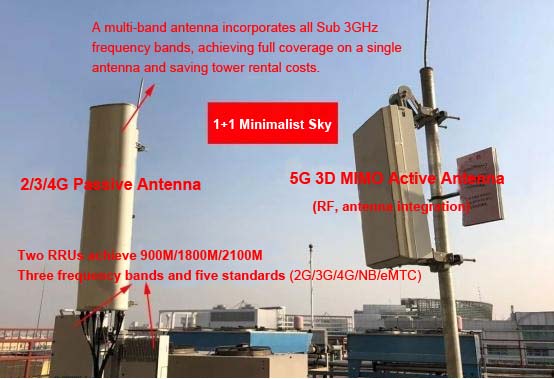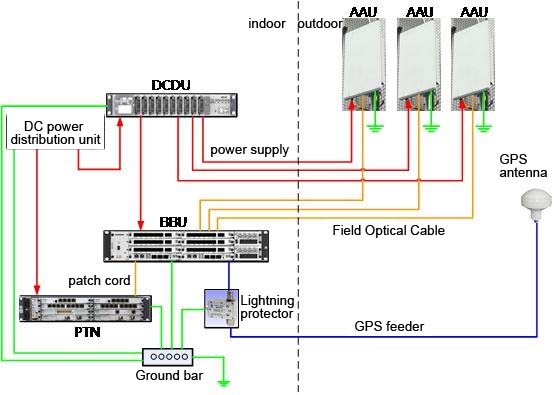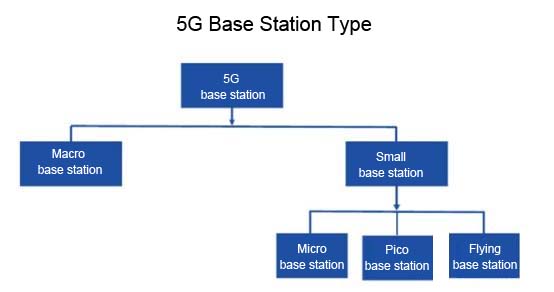With the advent of the 5G era, in order to ensure stable signal transmission and wider coverage, the construction of 5G base stations as the “pioneers” of 5G large-scale networking is crucial.
How are base stations built in the 5G era?
As of the end of 2022, the total number of mobile communication base stations in my country reached 10.72 million, a net increase of 754,000 from the end of the previous year. Among them, the total number of 5G base stations reached 2.22 million, a net increase of 795,000 from the end of the previous year, accounting for 20.7% of the total number of mobile base stations, an increase of 6.4 percentage points from the end of the previous year. In addition, the scale of mobile phone users has increased steadily, and 5G users account for more than 30%. As of the end of September, the total number of mobile phone users of the three basic telecommunications companies reached 1.682 billion. Among them, 5G mobile phone users reached 510 million, a net increase of 155 million from the end of the previous year, accounting for 30.3% of mobile phone users.
The fifth generation mobile communication technology (5G) is a new generation of broadband mobile communication technology with high speed, low latency and large connection characteristics. 5G communication facilities are network infrastructure for realizing the interconnection of people, machines and things. In order to meet the diverse application scenario requirements of 5G, the key performance indicators of 5G are more diversified. ITU has defined eight key performance indicators of 5G, among which high speed, low latency and large connection are the most prominent features of 5G. The user experience rate reaches 1Gbps, the latency is as low as 1ms, and the user connection capacity reaches 1 million connections/square kilometer.
5G base stations are the core equipment of 5G networks, providing wireless coverage and realizing wireless signal transmission between wired communication networks and wireless terminals. The architecture and form of base stations directly affect how 5G networks are deployed. Since the higher the frequency, the greater the attenuation during signal propagation, the base station density of 5G networks will be higher.

5G base station system composition
A complete 5G base station system is composed of main equipment, power supporting equipment and facilities, towers, and computer rooms. The main equipment includes BBU (baseband processing unit) and AAU (active antenna processing unit), and the supporting facilities include transmission, power supply, air conditioning, towers, antenna feeder, grounding system, etc.
Among them, BBU (Base band Unite) is the most core equipment in the base station. It is usually placed in a relatively hidden computer room and ordinary residents cannot see it. BBU is responsible for processing the signaling and data of the core network and users. The most complex protocols and algorithms in mobile communications are implemented in BBU. It can even be said that the base station is BBU.
From the appearance, BBU looks like the main chassis of a desktop computer. In fact, BBU is similar to a dedicated server (not a general-purpose one like a computer host). Its main functions are realized by two key boards: the main control board and the baseband board.
A BBU frame can be clearly seen to have 8 drawer-like slots in it, and these slots can be used to insert the main control board and the baseband board. How many main control boards and baseband boards need to be inserted into a BBU frame depends mainly on the capacity requirements of the base station to be opened. The more boards are inserted, the more capacity the base station has and the more users can be served at the same time.

The main control board is responsible for processing the signaling (RRC signaling) from the core network and user mobile phones, is responsible for interconnection with the core network, and is responsible for receiving GPS synchronization information and positioning information. The baseband board is responsible for baseband processing such as data encoding and modulation, and transmits the processed data to be transmitted to the RRU.

The RRU (Remote Radio Unit) was originally placed in the BBU frame. It was previously called the RFU (Radio Frequency Unit). It was used to convert the baseband signal transmitted by the baseband board through the optical fiber into a high-frequency signal on the frequency band owned by the operator, and transmit it to the antenna through the feeder. Later, it was found that the feeder transmission loss was too large. If the RFU was embedded in the BBU frame and placed in the machine room, and the antenna was hung on a distant tower, the feeder transmission distance was too far and the loss was too large. So the RFU was simply taken out and hung on the tower together with the antenna using optical fiber (optical fiber transmission loss is relatively small). It became the RRU, or radio frequency remote unit.
Background of 5G
Working mode of base station equipment
1. The working mode of 5G base station equipment is the same as that of 4G. The hardware difference is that the RRU+antenna of 4G becomes AAU in 5G. In addition, the 5G base station in SA mode replaces the BBU in NSA mode with DU+CU. Other external connections are the same.
2. BBU (or DU+CU) and AAU need power supply to work, and the power supply is obtained from the DC power distribution unit of the base station through DCDU (the red arrow line in the above figure indicates the DC power supply line and power supply direction).
3. For BBU to work normally, it needs to access the GPS clock synchronization signal. The GPS signal must be connected in series with a lightning arrester before accessing the BBU.
4. The signal source of BBU is connected through optical fiber from the transmission equipment PTN of the base station.
5. All equipment must be grounded, and the equipment grounding is connected to the grounding bar nearby.
There are two types of 5G networking modes: NSA and SA
NSA refers to the non-independent networking mode, which integrates 5G base stations and 4G base stations and is the current mainstream networking mode. SA refers to the independent networking mode, which realizes networking by building independent 5G base stations. Currently, almost all 5G deployed are NSA first, and then gradually transition to dual-mode networking on this basis, and finally realize SA.


5G base station classification
5G base stations are mainly divided into macro base stations and small base stations. Macro base stations are usually erected on iron towers. They are large in size, carry a large number of users, and have a very wide coverage area. However, due to the high frequency band of 5G, the signal range that macro base stations can cover is limited, and a large number of small base stations are required to cooperate with macro base stations for continuous coverage and shallow indoor coverage. Small base stations are divided into micro base stations, pico base stations, and flying base stations according to the size of the coverage area.

It was originally thought that the future network will coexist with 2/3/4/5G. China Unicom’s current network has three standards, GUL and three frequency bands, 900M/1800M/2100M. The introduction of new 5G spectrum and new modules will make base station sites more complex, and will also increase site energy consumption costs and tower rental costs.
But the actual situation is not the case.
In actual deployment, 5G equipment supports full-standard large-capacity BBU product solutions, N in 1 multi-standard fusion RF and full-band antennas, which can achieve extremely simple sites, reduce energy consumption and tower rental costs. The structure is as follows:
1+1 minimalist antenna: 1P (Passive) multi-port antenna incorporates the existing Sub 3G stock antenna, 1A (Active) 5G 3D MIMO independent antenna.
Multi-frequency integration module: Through 1.8G+2.1G dual-frequency 4T4R and other multi-frequency modules, 1 is used as 2, simplifying the RF modules on the tower, and supporting the integration of 1+1 minimalist antenna;
Full-standard baseband: large-capacity full-standard BBU, single BBU supports six modes in one;
One station and one cabinet: through intelligent outdoor cabinets, one station and one cabinet are realized, saving investment in equipment room resources.
Full-standard full-band equipment and 1+1 minimalist antenna greatly simplify the complexity brought by 2/3/4/5G co-site, which can achieve no or little increase in tower rental in the 5G era, reducing the operating costs of operators.
Conclusion
The fast-response 5G smart base station is a new type of site construction method, and the site construction process is very convenient. With the counterweight-type foundation assembly, there is no need to excavate the base station site, and the construction is safe and fast. It completely solves the problem of long construction period and slow site construction speed of conventional cast-in-place foundation. More importantly, the base station product is reusable, energy-saving and environmentally friendly. It can meet the needs of rapid networking and site construction in the future 5G base station construction process, and provide the necessary hardware infrastructure for the large-scale commercial use of 5G.

